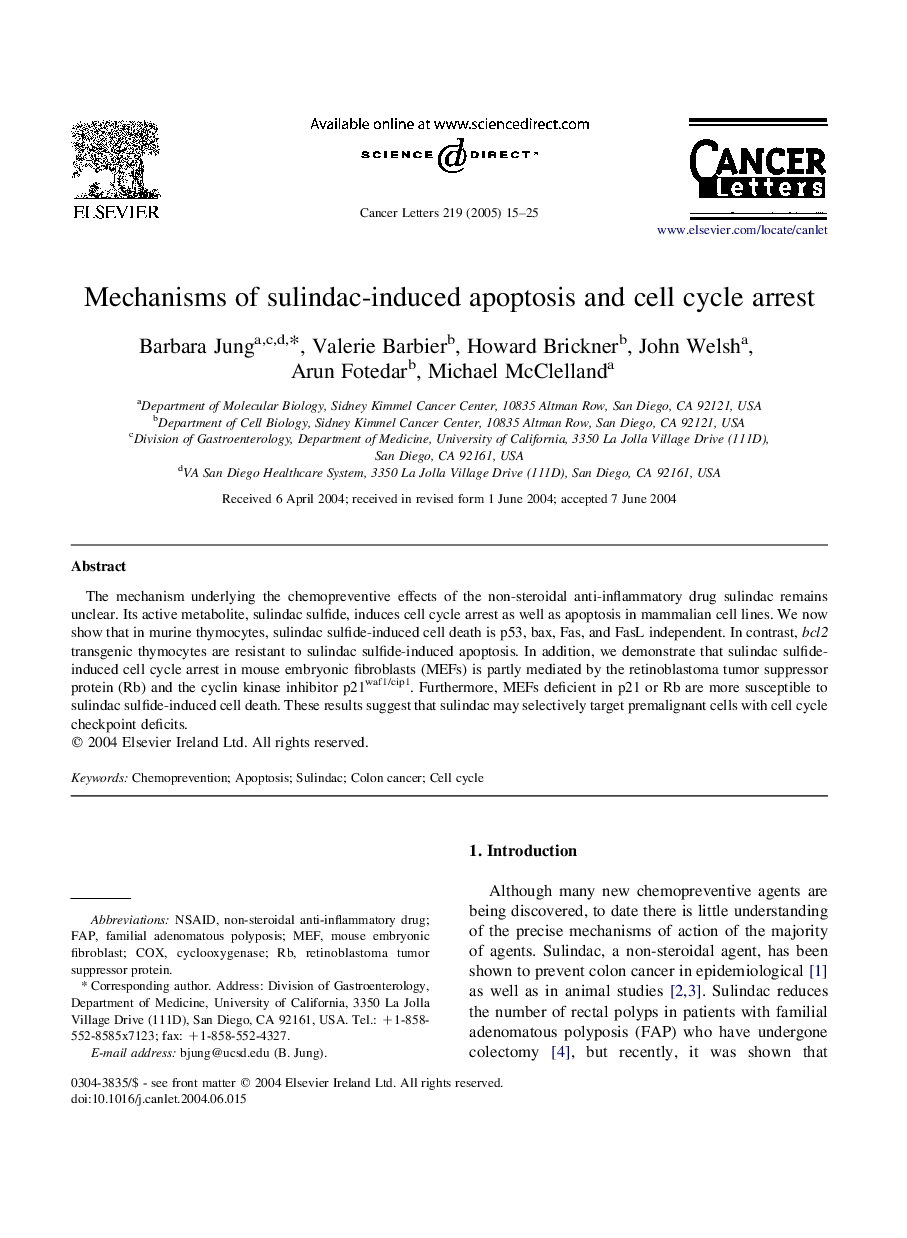| Article ID | Journal | Published Year | Pages | File Type |
|---|---|---|---|---|
| 10900507 | Cancer Letters | 2005 | 11 Pages |
Abstract
The mechanism underlying the chemopreventive effects of the non-steroidal anti-inflammatory drug sulindac remains unclear. Its active metabolite, sulindac sulfide, induces cell cycle arrest as well as apoptosis in mammalian cell lines. We now show that in murine thymocytes, sulindac sulfide-induced cell death is p53, bax, Fas, and FasL independent. In contrast, bcl2 transgenic thymocytes are resistant to sulindac sulfide-induced apoptosis. In addition, we demonstrate that sulindac sulfide-induced cell cycle arrest in mouse embryonic fibroblasts (MEFs) is partly mediated by the retinoblastoma tumor suppressor protein (Rb) and the cyclin kinase inhibitor p21waf1/cip1. Furthermore, MEFs deficient in p21 or Rb are more susceptible to sulindac sulfide-induced cell death. These results suggest that sulindac may selectively target premalignant cells with cell cycle checkpoint deficits.
Keywords
Related Topics
Life Sciences
Biochemistry, Genetics and Molecular Biology
Cancer Research
Authors
Barbara Jung, Valerie Barbier, Howard Brickner, John Welsh, Arun Fotedar, Michael McClelland,
